
Perennial Forbs Around Las Vegas, Vegetation Around Las Vegas
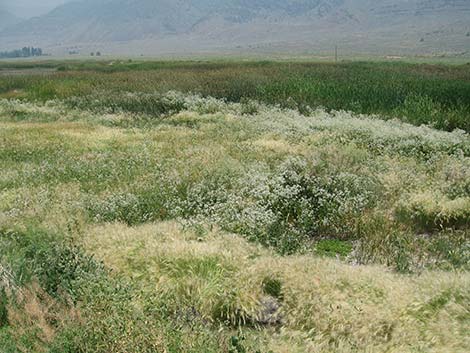 |
General: Tall Whitetop (Lepidium latifolium) is an invasive perennial forb that grows 3-6 feet tall, has smooth, grayish leaves, and produces many tiny white flowers at the top of the plant. The lower leaves are much larger than the upper leaves. Grows from rhizomes and forms thick stands that crowd out other species. Tall Whitetop is an invasive noxious weed. Around Las Vegas, this species is uncommon -- let's all work to make sure it stays that way. Tall Whitetop is the #1 "priority weed of concern" in the Lower Las Vegas Wash, and it is on the Lake Mead NRA "Top 10 Invasive Species" list. This is a noxious weed. If hikers and other visitors to the native habitats around Las Vegas see this species, please report the observation to the Nevada Department of Agriculture using their online forms. If you have this species on your private property, please consider eradicating it. |
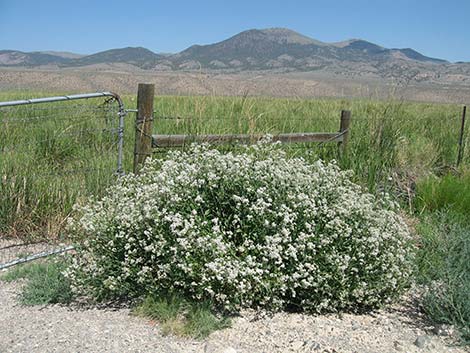 |
Family: Mustard (Brassicaceae). Other Names: tall whitetop, broadleaf pepperweed, broadleaved pepperweed, giant whiteweed, iron weed, perennial peppercress, perennial peppergrass, Cardaria latifolia. The proper common name for this species is "broadleaved pepperweed," but I am using "perennial pepperweed" to match the Nevada State list of noxious weeds. Plant Form: Perennial forb from rhizomes; upright, branching flower stalks. Height: To about 6 feet. |
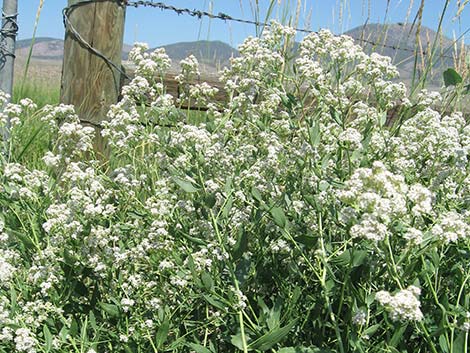 |
Stems: Upright, branched. Leaves: Green to gray-green; alternate; surface smooth without hairs (glabrous). Different lower and upper leaves. Lower leaves long and wide (to 12 by 3 inches), toothed, long-petioled; upper leaves smaller, sessile. Leaves do not clasp the stem. Flowers: Blooms in spring to early summer. Inflorescence: panicle. Petals 4, white; stamens 6. Seeds: Develop in 2-chambered seed pod (silicles), which if round and flattened, and without a notch at the tip. Seeds small and round flattened. Habitat: Invasive in wet areas such as wetlands, river bottoms, roadside ditches, fields, cultivated lands, and saline areas. |
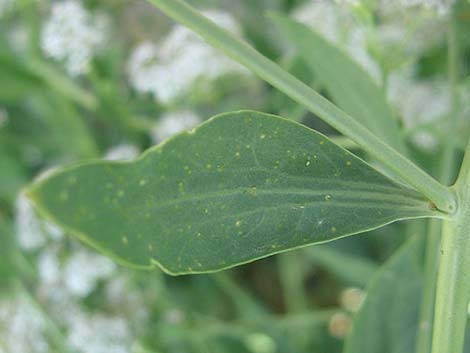 |
Elevation: To about 6,000 feet. Distribution: Throughout most of the U.S. and Canada. Native to central Asia. Comments: For More Information: DiTomaso, J.M., and E.A. Healy. 2007. Weeds of California and other Western States. University of California Agricultural and Natural Resources Publication 3488. 2 Vol. ISBN 978-1-879906-69-3. |
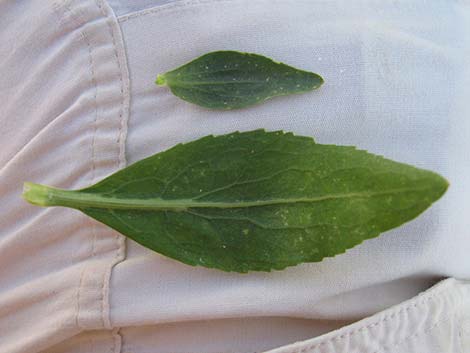 Upper (top) and lower (bottom) leaves. Lower leaves long and wide (to 12 by 3 inches), toothed, and petioled; upper leaves smaller, sessile. |
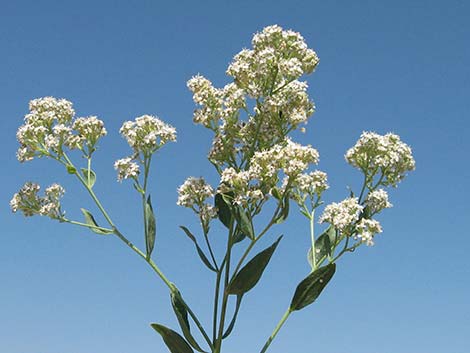 Open panicle with dense clusters of white flowers |
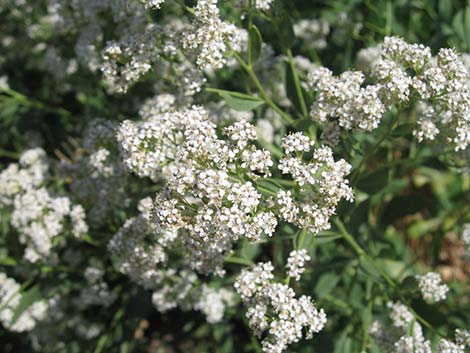 Dense clusters of white flowers |
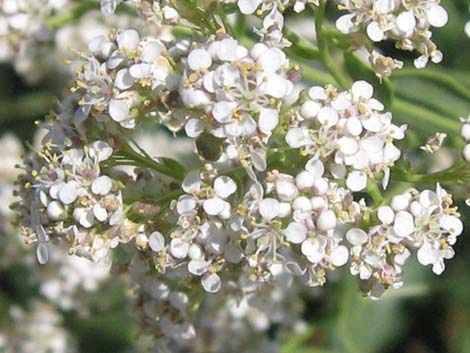 Flowers are white with four petals and six stamens |
Note: All distances, elevations, and other facts are approximate. Names generally follow the USDA database.
![]() ; Last updated 211228
; Last updated 211228
| All Perennial Forbs | Plant Species Index | Glossary | Copyright, Conditions, Disclaimer | Home |